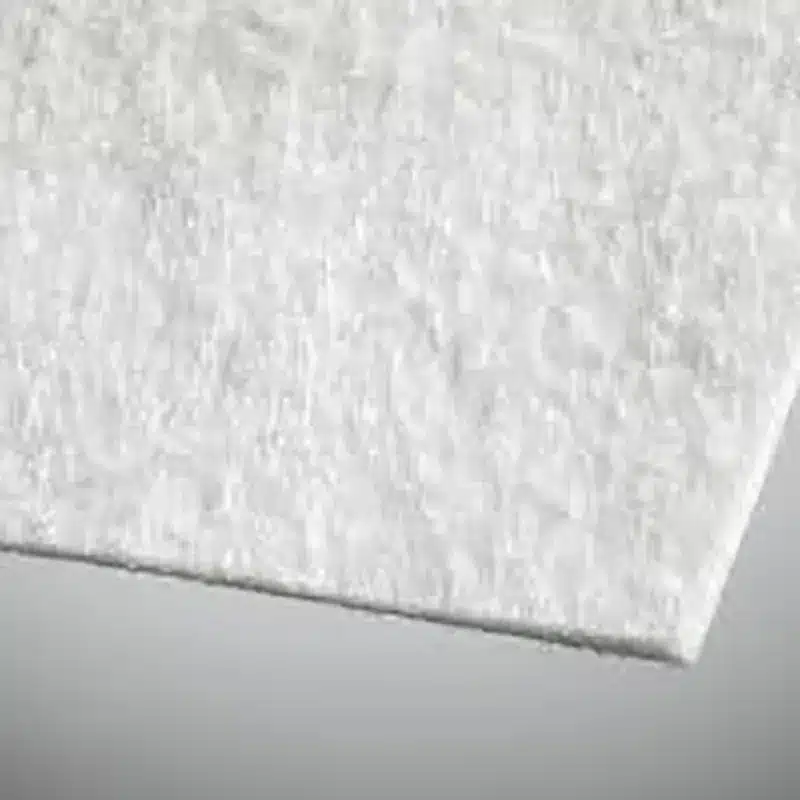+86-159 9860 6917
info@geofantex.com
geofantex@gmail.com
+86-400-8266163-44899
Retaining walls are essential structures for preventing soil erosion and supporting various landscaping projects. One critical element that enhances the performance and longevity of these walls is the use of geotextile fabric. This fabric not only reinforces the retaining wall but also improves drainage, preventing water accumulation behind the structure. In this article, we’ll explore how geotextile fabric can be used in retaining walls, what the best type of fabric is for this purpose, and how water interacts with geotextile material.
Can geotextile be used in a retaining wall?
Geotextiles are commonly used behind retaining walls for several purposes:
- Separation: They prevent the mixing of backfill material with the native soil, preserving the wall’s structural integrity.
- Filtration: Non-woven geotextiles allow water to pass through while retaining soil particles, reducing pressure buildup and preventing clogging.
- Drainage: They promote the flow of water away from the wall, which helps reduce hydrostatic pressure—a major cause of wall failure.
- Erosion control: Geotextiles help prevent soil loss behind the wall due to water movement.
In short, using geotextile fabric behind a retaining wall enhances drainage, stability, and long-term durability, making it a critical component in most modern retaining wall designs.

What is the best type of geotextile fabric for retaining walls?
Choosing the right geotextile fabric ensures proper drainage, soil stabilization, and long-term wall performance. Key options include:
- Woven Geotextiles:
- Strength: High tensile strength for soil stabilization and reinforcement.
- Drainage: Moderate; mainly used for separation rather than filtration.
- Best Use: Heavy-load walls or unstable soils requiring extra support.
- Non-Woven Geotextiles:
- Strength: Moderate; suitable for standard retaining walls.
- Drainage: High permeability allows water to flow freely, reducing hydrostatic pressure.
- Best Use: Areas with high water flow or where drainage is critical.
- Geogrids (optional):
- Strength: Very high when used in combination with fill layers.
- Drainage: Low if used alone.
- Best Use: Steep slopes or walls requiring soil reinforcement.
Installation Tips: Overlap sheets properly (12–18 inches for non-woven), secure woven fabrics with staples or pins, and ensure geogrids are correctly tensioned. Proper fabric selection and installation maximize stability, drainage, and wall longevity.

How Do You Use Geotextile Fabric in a Retaining Wall?
- Excavate: Dig the trench for the retaining wall and level the base to create a stable foundation, ensuring proper depth and width according to design requirements.
- Install Drainage Layer: Place a layer of gravel or drainage stone at the bottom of the trench to facilitate water flow and prevent water buildup behind the wall.
- Apply the Geotextile Fabric: Lay the geotextile fabric over the drainage layer. Make sure the fabric is wide enough to extend beyond the backfill zone and properly overlap the trench sides.
- Place Backfill: Add backfill material (gravel, sand, or approved soil) in layers. Fold or wrap the geotextile fabric over each layer to fully encapsulate the backfill and prevent mixing with native soil.
- Compact: Compact each backfill layer carefully to improve stability, reduce settlement, and maintain proper contact with the geotextile fabric.
- Finish the Wall: Continue constructing the retaining wall while keeping the geotextile fabric securely positioned behind the structure, ensuring it remains aligned and unwrinkled.
- Result: By separating soil from water and improving drainage, geotextile fabric reduces hydrostatic pressure, prevents soil movement, and minimizes the risk of retaining wall failure, enhancing the wall’s long-term stability and performance.
How do you use geotextile fabric in a retaining wall?
- Excavate: Dig the trench for the retaining wall and level the base to create a stable foundation.
- Install Drainage Layer: Place a layer of gravel or drainage stone at the bottom of the trench to allow water to flow freely.
- Apply the Geotextile Fabric: Lay the geotextile fabric over the gravel layer. Ensure it is wide enough to extend beyond the backfill zone and overlap the trench sides.
- Place Backfill: Add backfill material (gravel, sand, or approved fill) in layers. Then, fold or wrap the geotextile fabric over each layer to fully encapsulate the backfill and prevent soil mixing.
- Compact: Compact each backfill layer properly to improve stability and reduce future settlement.
- Finish the Wall: Continue building the retaining wall while keeping the geotextile fabric securely positioned behind the structure.
- Result: By separating soil and water while improving drainage, geotextile fabric helps reduce hydrostatic pressure, prevents soil movement, and minimizes the risk of retaining wall failure.
Geotextile fabric plays a vital role in retaining walls by providing stability and improving drainage. Non-woven geotextiles are the best choice due to their permeability and durability. Water can pass through geotextile fabric, preventing hydrostatic pressure while keeping soil intact. Proper installation of geotextile fabric behind the retaining wall enhances the structure’s performance, making it a reliable solution for long-term landscaping and erosion control projects.



Get Free Sample
We’ll respond as soon as possible(within 12 hours)






















